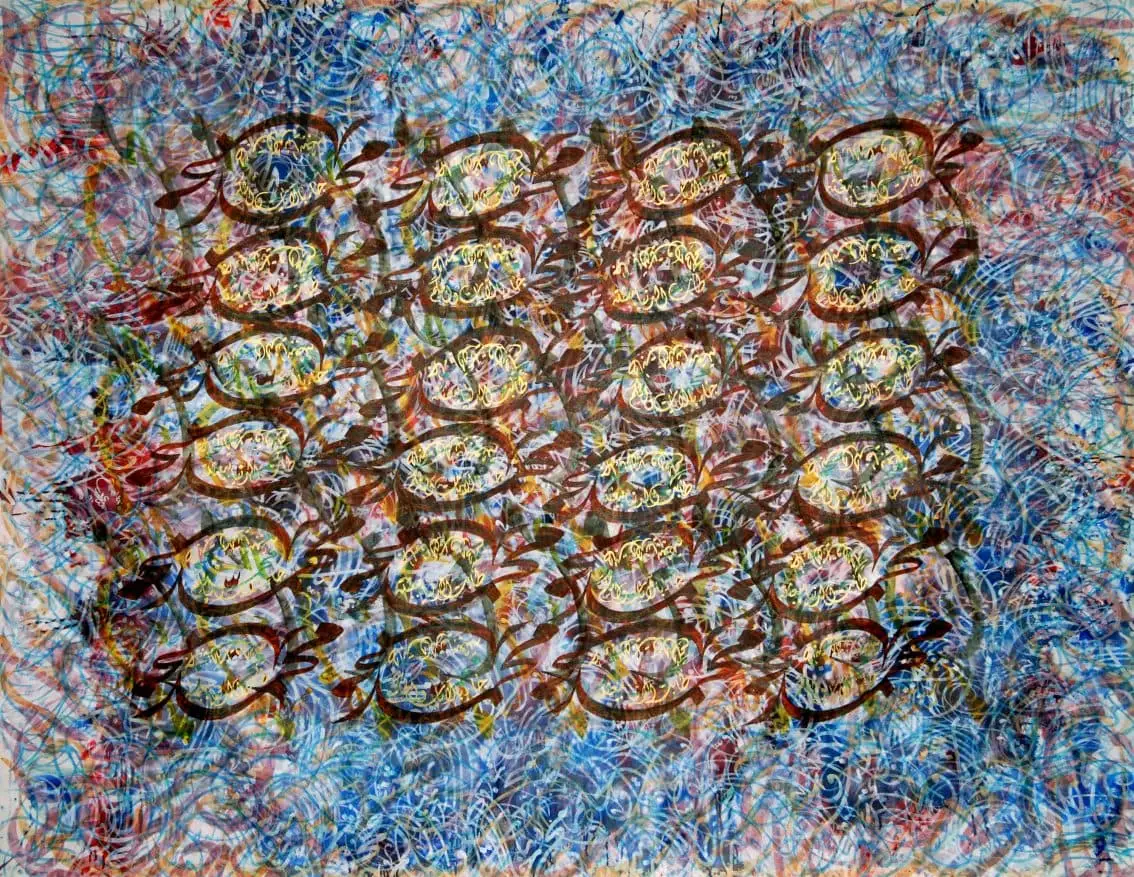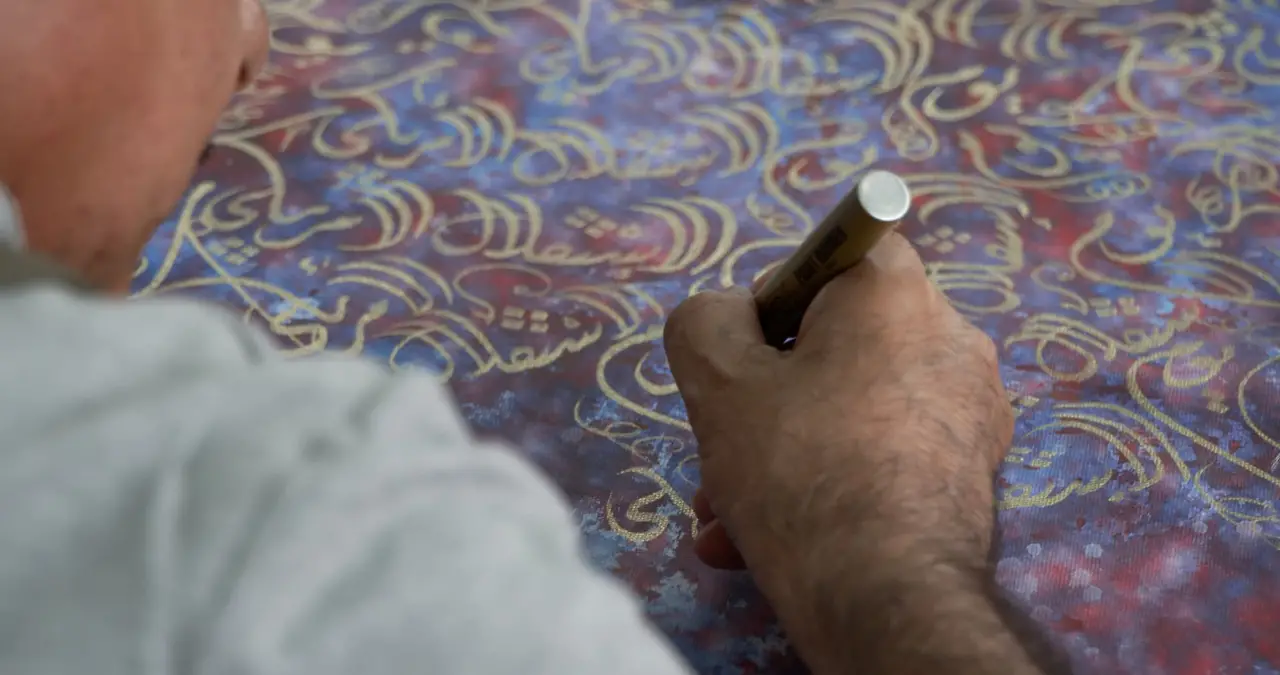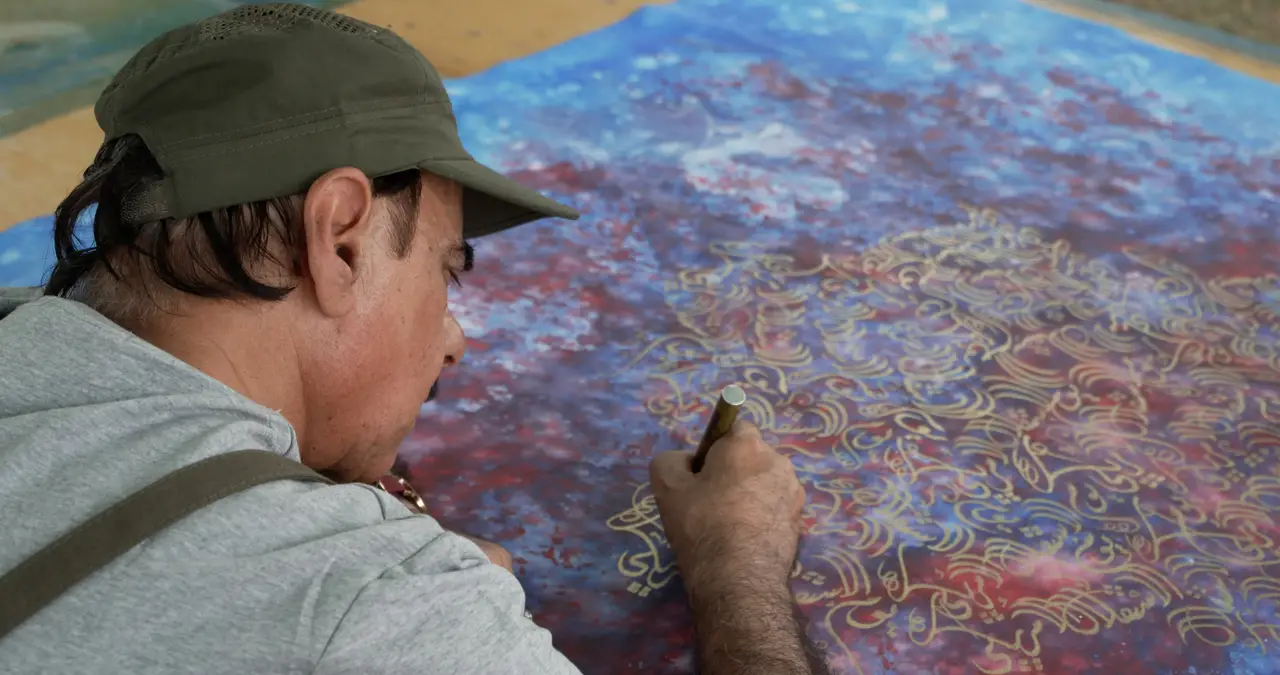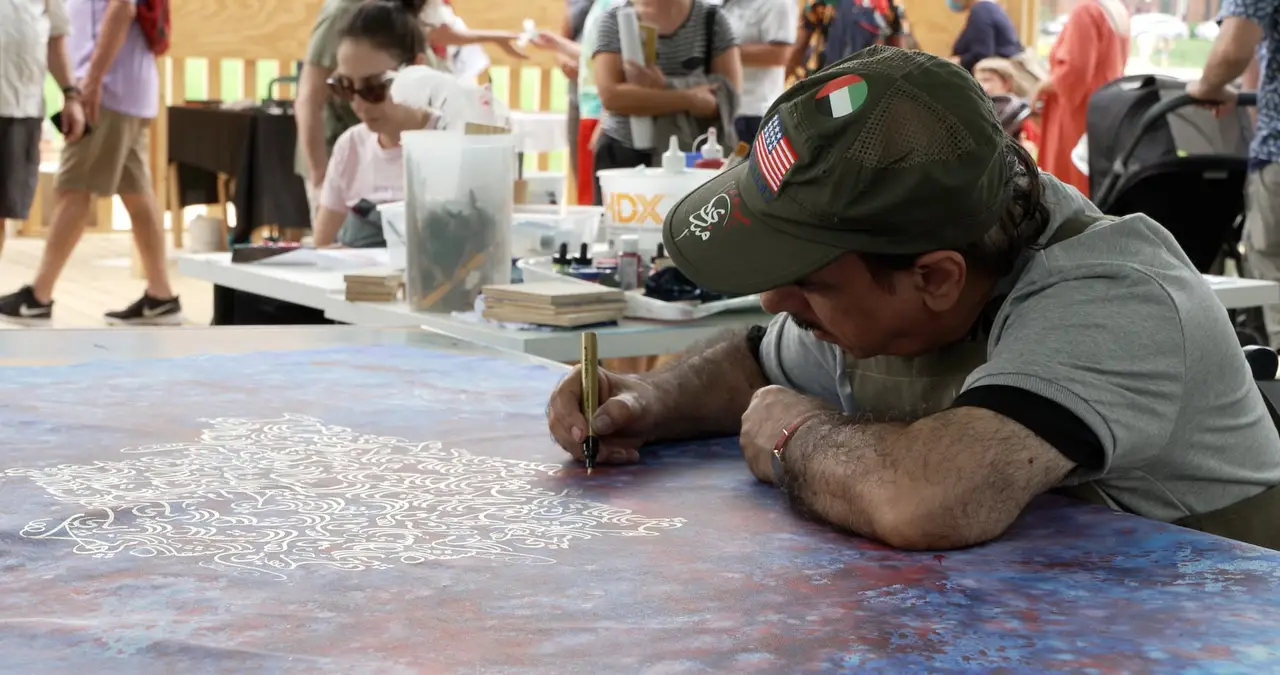
Mohammed Mandi is the UAE’s leading calligrapher. Known for his stylised form of the Arabic alphabet that incorporates decorative letters and geometric patterns, his work can be seen across Emirati passports and on banknotes in the country. In Abu Dhabi, he teaches the intricate art of traditional Arabic calligraphy to all levels of students. He shared his passion with visitors at the Smithsonian Folklife Festival, including a five-year-old girl who immediately took to the flexibility and flow of the craft.
“I own 5,000 colored pencils and drawing tools. I am deeply attached to them; They are my children, my companions. When I travel, I develop separation anxiety and can almost hear their yearning to be picked up, calling out to me that we must continue our shared purpose to make art.
“Coming here to the United States, I never thought that the American people would take an interest in Arabic calligraphy, especially since there is so much art to see in the area. The script in calligraphy is not typically easy to read, but Americans think it is visually stunning and I think that is why they appreciate it. Arabic is unique in that it can be shaped and formed in endless ways while still being legible.
“What stood out to me specifically is how a 5-year-old girl picked up a coloring pencil after watching me drawing and tried to do calligraphy herself. She was taken by the flexibility and malleability of calligraphy. Just with that encounter, I feel that I have left a mark here in the US and it is an honor.”





